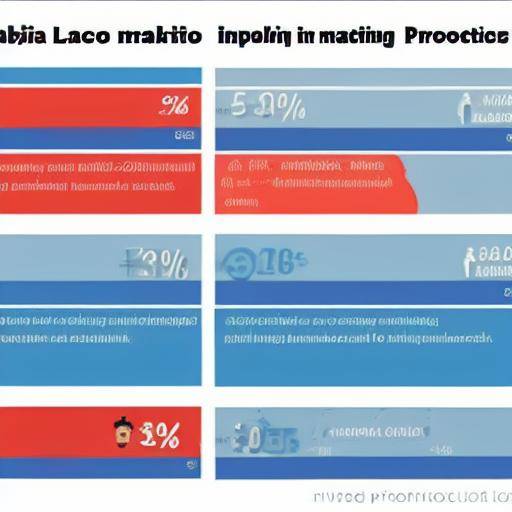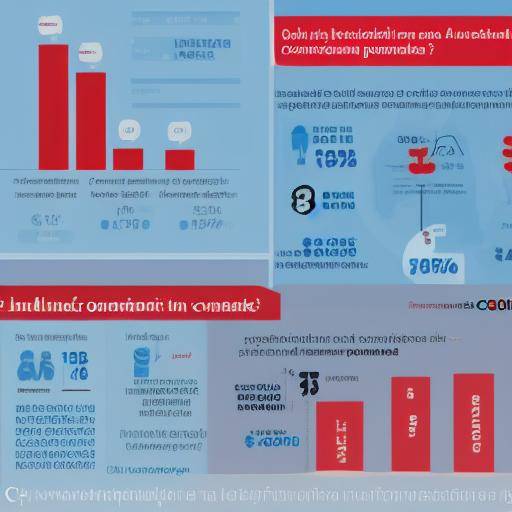
Marketing and advertising play a crucial role in how consumers perceive, compare and make purchase decisions in the current digital ecosystem. From the influence on purchasing decisions to the control of price perception, these strategies have a significant impact on the behavior of the consumer and the way companies compete in the market. In this article, we will explore in depth the impact of marketing and advertising on price comparison, focusing on influence, decisions and control, and provide practical advice and comprehensive analysis to better understand this constantly evolving phenomenon.
Introduction
The digital world has transformed the landscape of marketing and advertising, providing companies with unprecedented opportunities to reach their audience and promote their products and services. In this context, price comparison has become more accessible and transparent to consumers, which has generated a highly competitive scenario for companies. Marketing and advertising play a central role in this new paradigm, influencing purchasing decisions and allowing greater control over price perception. We will then explore further each of these aspects.
History and Background
Marketing and advertising have a long history of influence on consumer behavior and how prices are compared. From the first printed ads to today's highly segmented digital campaigns, these strategies have evolved significantly to adapt to changes in consumer technology and behavior.
Origins and Evolution
Marketing and advertising have their roots in the first forms of trade, where sellers used persuasion techniques to highlight their products and attract consumers. Throughout history, these practices have been sophisticated and diversified, covering a wide range of platforms and media. The arrival of the digital era marked a turning point, as companies began to use the power of the internet and social networks to reach their audiences more efficiently and personalizedly.
Significant developments
In recent decades, we have witnessed significant advances in marketing and advertising strategies, driven by the emergence of new technologies and data analysis tools. Precise audience segmentation, content marketing and location-based marketing are just a few examples of how companies have refined their approaches to influence purchasing decisions and control price perception.
Case studies
To better understand the impact of marketing and advertising on price comparison, it is crucial to analyze case studies that illustrate how these strategies have influenced consumer behavior and the perception of prices within different industries or contexts. These case studies offer a practical insight into how marketing and advertising strategies have influenced price comparison over time.
Deep analysis
To fully understand the influence of marketing and advertising in price comparison, it is essential to conduct a comprehensive analysis that encompasses the benefits, challenges, current trends, as well as to examine different perspectives and views on the subject.
Benefits and Challenges
Marketing and advertising offer significant benefits for companies, such as the ability to reach a wider audience, improve brand recognition and ultimately influence purchasing decisions. However, they also present challenges, such as market saturation and the need to remain relevant in a highly competitive environment.
Current trends
Currently, marketing and advertising strategies are experiencing a shift towards more personalized and data-oriented approaches. Artificial intelligence and automatic learning are being used to deliver personalized experiences to consumers, which has a significant impact on price comparisons and how offers and promotions are perceived.
Perspectives and Views
The impact of marketing and advertising on price comparison has been discussed between experts and marketing professionals. Some argue that these strategies provide greater control over how prices are perceived, while others argue that transparency and competition have leveled the playing field for consumers.
Comprehensive review
Once we have explored the fundamental aspects of the impact of marketing and advertising on price comparison, it is crucial to examine how these strategies are applied in practice, as well as to analyse best practices and future prospects.
Applications and Best Practices
Marketing and advertising applications in price comparison are diverse and range from product promotion campaigns to brand reputation management. Companies have developed a series of good practices to maximize the impact of their marketing and advertising strategies on price comparison, including message customization and the creation of enveloping shopping experiences.
Opinions of Experts and Future Perspectives
Marketing and advertising experts have a unique vision of how these strategies will evolve in the future and how they will influence price comparison. Their perspectives are fundamental to understanding how companies can adapt to a changing environment and capitalize on new opportunities to influence purchasing decisions.
Comparative analysis
By comparing influence, decisions and control in the context of marketing and advertising, it is essential to examine the similarities, differences and possible synergies between these aspects.
Similarities and Variances
Influence, decisions and control are interconnected elements that have a direct impact on price comparison. Understanding how these aspects are intertwined is crucial to developing effective marketing and advertising strategies that influence purchasing decisions positively.
Examples and Scenarios
To illustrate the similarities and differences between influence, decisions and control, it is useful to present concrete examples and scenarios that demonstrate how these variables interact in the price comparison process. These examples allow a clearer understanding of how marketing and advertising strategies can impact consumer perception of prices.
Practical Tips and Accessible Tips
In order to provide practical value to readers, it is important to include practical advice and actionable advice that will help them better understand the impact of marketing and advertising on price comparison, as well as to implement effective strategies in their own business activities.
Points of Action
Providing clear and actionable advice that readers can implement in their own marketing and advertising strategies is essential to ensure that the content is practical and useful. These action points may include tips on how to customize messages to influence purchase decisions or how to use digital advertising to highlight offers and promotions.
Step by Step Guides
Sometimes it is useful to provide step-by-step guides that detail specific processes that readers can follow to implement effective marketing and advertising strategies in the context of price comparison. These guides provide a clear structure for implementation and increase the value of content for readers.
Industry Perspectives and Expert Reviews
Industry perspectives and expert opinions play a crucial role in understanding the impact of marketing and advertising on price comparison. By incorporating insights from industry professionals, we can shed light on future trends and best practices that readers can apply in their own business strategies.
Future Implications
Exploring future implications of the impact of marketing and advertising on price comparison is critical for readers to understand how these strategies will evolve in the future and how they can adapt their own business strategies to keep up with changes in the market and consumer behavior.
Interviews and Expert Quotes
Including interviews and expert quotations in the field of marketing and advertising provides a valuable perspective on how these disciplines are being developed and how they will impact the price comparison in the future. Expert opinions allow readers to obtain privileged information about emerging trends and potential opportunities in the field of marketing and advertising.
Case Studies and Practical Applications
Case studies and practical applications offer readers a detailed view of how marketing and advertising strategies have influenced price comparisons in real situations. These practical examples illustrate the concrete results that companies have achieved by implementing effective marketing and advertising strategies in relation to price comparison.
Results and Lessons Learned
Analyzing the results of case studies and practical applications provides readers with a clear understanding of the tangible impacts that marketing and advertising strategies can have on price comparison. In addition, drawing lessons learned from these study cases allows readers to identify successful practices that they can apply in their own business strategies.
Examples of Different Industries and Contexts
Including examples of case studies and practical applications from different industries and contexts broadens readers' perspective on how marketing and advertising strategies can influence price comparison in a variety of scenarios. This allows them to identify approaches and strategies that best fit their own business situations.
Future Trends and Predictions
To close the analysis of the impact of marketing and advertising on price comparison, it is essential to explore emerging trends and make predictions about how these strategies will evolve in the future. This section offers readers a panoramic view of the opportunities and challenges that await them in the world of marketing and advertising.
Current Data-Based Predictions
By basing predictions on current data and trends identified in the field of marketing and advertising, readers can get a stronger view of what the future holds in terms of influence, decisions and control in price comparison.
Emerging Challenges and Opportunities
Exploring emerging challenges and opportunities associated with the impact of marketing and advertising on price comparison gives readers a more comprehensive understanding of the forces that will shape the business landscape in the coming years and allow them to anticipate possible changes in the market.
Conclusions
The impact of marketing and advertising on price comparison is a dynamic and multifaceted phenomenon that has significant implications for companies and consumers. Throughout this article, we have explored in depth how marketing and advertising influence purchasing decisions and how companies can exercise control over market price perception. With a thorough analysis of the benefits, challenges, practical applications and future trends, readers have acquired a comprehensive understanding of the impact these strategies have on the field of price comparison.
FAQs
How does marketing influence purchasing decisions and price comparison?
Marketing has a significant impact on purchasing decisions by influencing the perception of products and services, as well as in value communication. In addition, marketing strategies can highlight offers and promotions, which influences consumer price comparison.
What role does advertising play in the perception of prices by consumers?
Advertising plays a crucial role in price perception by communicating the value of products and services, as well as by highlighting key differentiators that impact on price comparison. In addition, advertising can highlight offers and promotions, which influences the comparison of prices by consumers.
What is the role of digital marketing in price comparison?
Digital marketing has transformed how consumers compare prices by providing access to detailed information on products and services. In addition, digital marketing strategies offer the opportunity to highlight offers and promotions in a highly segmented manner, which influences purchasing decisions and price comparison.
How can companies control price perception through marketing and advertising strategies?
Companies can exercise control over price perception by communicating the added value of their products and services through marketing and advertising strategies. By highlighting unique features, benefits and special offers, companies can influence consumer perception of prices.
What are the emerging trends in marketing and advertising that will impact the price comparison?
Emerging trends include greater personalization of messages, the use of artificial intelligence to offer personalized shopping experiences, as well as the focus on transparency and authenticity in marketing and advertising strategies, which will have a significant impact on price comparison.
How can small and medium-sized businesses leverage marketing and advertising to influence price comparison?
Companies can take advantage of effective marketing and advertising strategies to influence price comparisons through audience segmentation, the creation of relevant and attractive content, as well as the focus on differentiation of products and services in the market.
Conclusion
Marketing and advertising play a key role in influence, decisions and control in price comparison. These strategies not only affect the perception of goods and services, but also impact on consumer purchasing decisions. With a thorough analysis of its impact, emerging trends and practical applications, companies can develop effective strategies to influence price comparison and highlight a highly competitive market.






















































